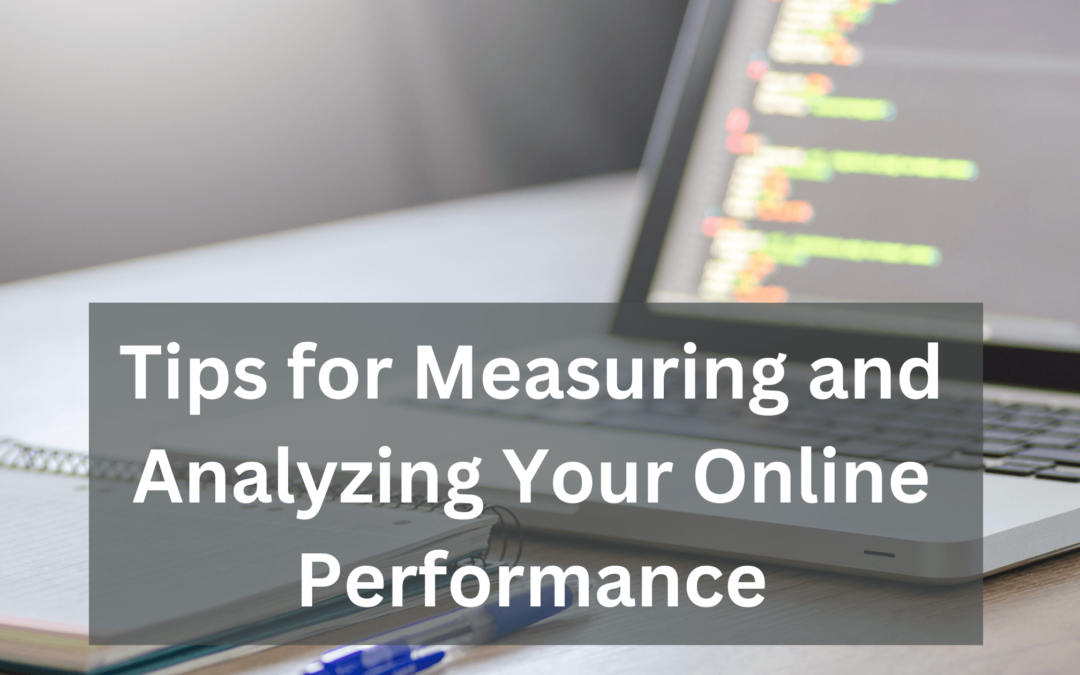In today’s digital landscape, measuring and analyzing your online performance is essential for understanding the effectiveness of your online presence and optimizing your strategies. Whether you have a website, social media profiles, or an e-commerce store, tracking key performance metrics provides valuable insights into user behavior, engagement, and conversion rates.
1. Define Clear Goals and Key Performance Indicators
Before diving into data analysis, it’s crucial to define clear goals for your online presence. Determine what you want to achieve, such as increasing website traffic, improving conversion rates, or boosting engagement on social media. Based on your goals, establish relevant Key Performance Indicators (KPIs) that will help you measure progress. These could include metrics like website traffic, bounce rate, click-through rate, conversion rate, or social media engagement.
2. Utilize Web Analytics Tools
Web analytics tools are essential for measuring online performance. Popular platforms like Google Analytics provide a wealth of data and insights about your website visitors, their behavior, and the effectiveness of your marketing campaigns. Set up tracking codes on your website to capture data accurately. Leverage these tools to monitor key metrics, understand user demographics, track referral sources, and identify areas for improvement.
3. Track Social Media Metrics
If you have a presence on social media platforms, tracking relevant metrics is vital. Each platform offers its own analytics tools that provide insights into engagement, reach, follower growth, and post-performance. Pay attention to metrics like likes, comments, shares, reach, and click-through rates. Analyzing these metrics helps you understand the effectiveness of your social media efforts and optimize your content strategy accordingly.
4. Monitor Conversion Rates
Conversion rates are a critical metric for evaluating your online performance. Depending on your objectives, conversions may include purchases, form submissions, email sign-ups, or any other desired action on your website. Set up conversion tracking through tools like Google Analytics to understand the effectiveness of your marketing campaigns, landing pages, and user experience. Monitor conversion rates, identify bottlenecks, and implement strategies to improve your conversion funnel.
5. Use A/B Testing for Optimization
A/B testing is a powerful technique for optimizing your online performance. By testing different versions of web pages, emails, or advertisements, you can measure the impact of changes on user behavior and conversion rates. Experiment with variations of headlines, call-to-action buttons, layouts, or images, and analyze the results to identify winning variations. A/B testing allows you to make data-backed decisions and continuously improve your online performance.
6. Analyze User Feedback and Surveys
In addition to quantitative data, qualitative insights are valuable for understanding your online performance. Collect user feedback through surveys, user testing, or customer support interactions. Analyze the feedback to gain insights into user preferences, pain points, and satisfaction levels. This qualitative data complements quantitative metrics, providing a more holistic understanding of your online performance and helping you identify areas for improvement.
7. Regularly Review and Refine Your Strategy
Measuring and analyzing your online performance should be an ongoing process. Regularly review your metrics, compare them against your goals, and identify trends and patterns. Use the insights gained to refine your online strategy and tactics. Experiment with new approaches, track the impact and iterate based on the data. Continuously monitoring and optimizing your online performance ensures that you stay ahead in a dynamic digital landscape.
Measuring and analyzing your online performance is essential for achieving success in the digital realm. Embrace data-driven insights and let them guide your digital journey.
